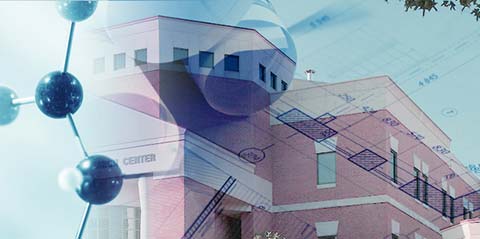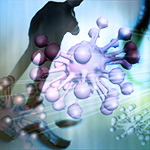


Larry Walker
The expanding footprint of the National Center for Natural Products Research is poised to move University of Mississippi research one step closer to the marketplace.
Phase II construction of NCNPR broke ground in 2012 and is expected to near completion in late 2014. The new research wing of 96,000 gross square feet will add 53,000 square feet of usable research space dedicated to advancing commercial development of natural products.
“Much of our research program focuses on discovery of new molecules and new knowledge about them, but this work is always done with a view to advance these discoveries into commercial development and clinical use,” said Larry Walker, NCNPR director. “For most of the things we’re working on, that’s a large step, and typically it takes different approaches than what we would use in the early discovery stages.”
The additional space will allow NCNPR to make, extract or prepare large quantities of compounds being considered for further development work. The expansion will also make possible the application of highly optimized and standardized processes for the preparation and characterization of the compounds. These tools give researchers the ability to thoroughly analyze compounds and their metabolites to see how they perform in disease models, and to characterize their safety, all of which are keys to finding partners for commercialization. Working on a larger scale will allow NCNPR researchers to better determine which compounds hold the most promise as future drugs.
“The most direct advantage will be enhancing the interface with the private sector,” Walker said. “The more value we can add to projects we are working on, and the more information we can get that reduces the risk of failure in clinical development, the better.”
The addition of space dedicated to commercial development will allow NCNPR—already one of the most competitive centers in its field—to pursue a greater number of funding opportunities, including those that are aimed at research demonstrating strong translational capacity. The Phase II construction also supports the School of Pharmacy’s mission to provide excellent training to young pharmacists and pharmaceutical scientists in an environment where there is a vibrant research enterprise feeding student learning.
“It filters down to students,” Walker said. “It makes our students more valuable and more marketable, and gives our students a better education.”
Many of the NCNPR’s research programs focus on the state’s greatest health problems, including cardiovascular disease, obesity, cancer and diabetes. Expertise also focuses on developing drugs to treat diseases that are uncommon in the United States but pose major threats globally, such as malaria. Even though finding ways to treat malaria may not directly affect Mississippi’s people, the discovery and development of new drugs does have an economic impact.
“Hopefully, this is going to attract more small—and maybe even one day, larger—industries to this region and the state and make those that are already here more competitive,” Walker said.
The Phase II construction is funded jointly by federal and university funds. Federal sources consist of a highly competitive $13,915,445 award from the National Center for Research Resources under the National Institutes of Health Recovery Act Limited Competition: Extramural Research Facilities Improvement Program (C06), a subsection of the American Reinvestment and Recovery Act (Award No. C06RR030081), and $17,886,175 from the U.S. Department of Health Resources and Human Services Administration (Award No. C76HF10917). The C06 award was the only one of its kind in Mississippi and one of few awarded to a School of Pharmacy nationwide. The center’s expansion promises outcomes that coincide with the objectives of the American Reinvestment and Recovery Act, including adding new jobs to stimulate the economy and teaming research enterprise with the private sector.
The content of this article is solely the responsibility of the authors and does not necessarily represent the official views of the National Center for Research Resources, the Recovery Act Limited Competition: Extramural Research Facilities Improvement Program (C06), or the National Institutes of Health.





